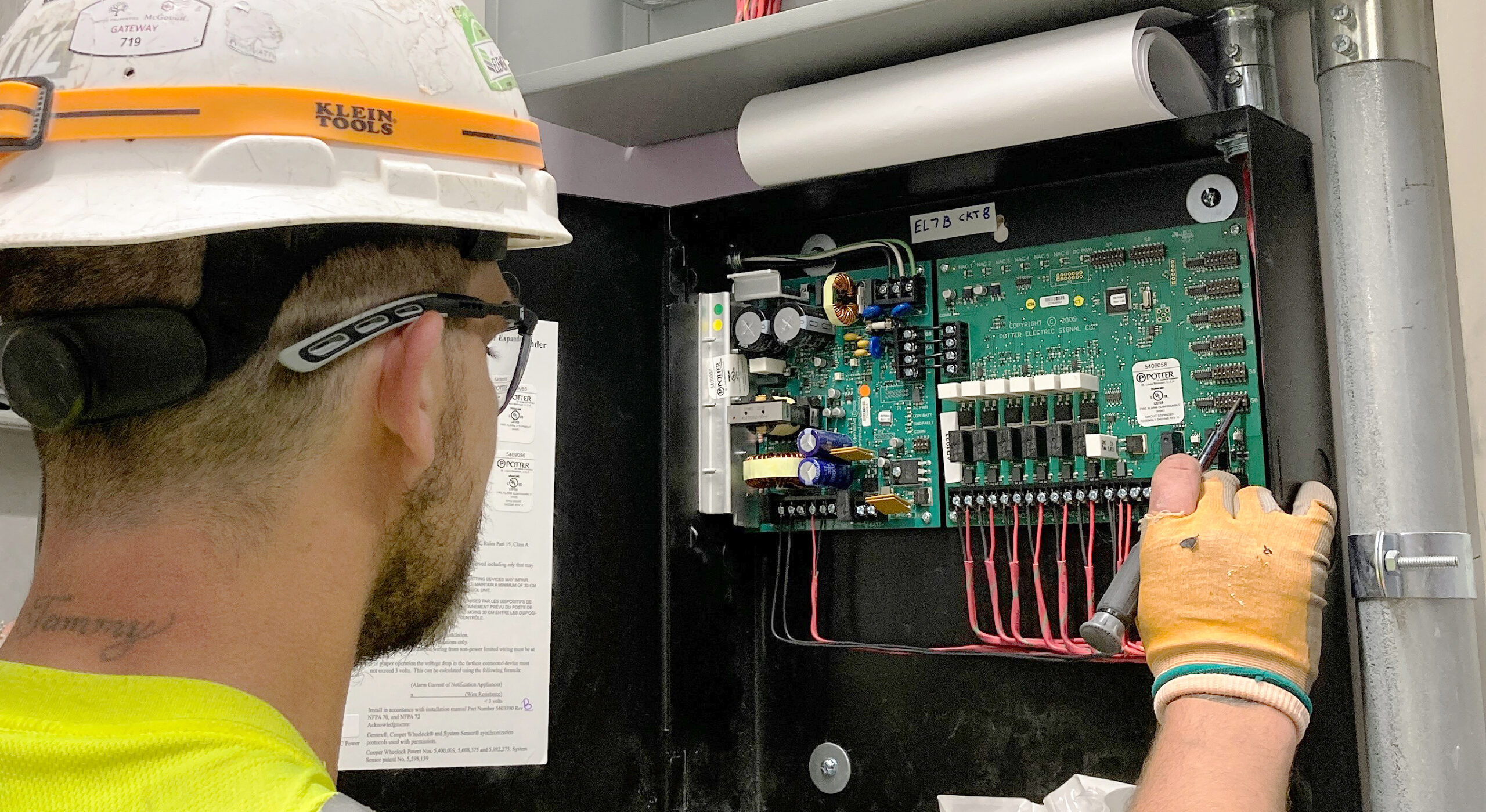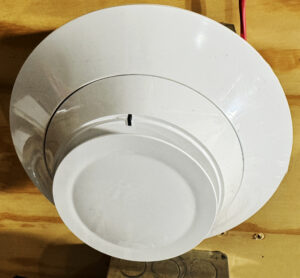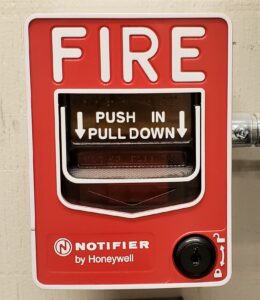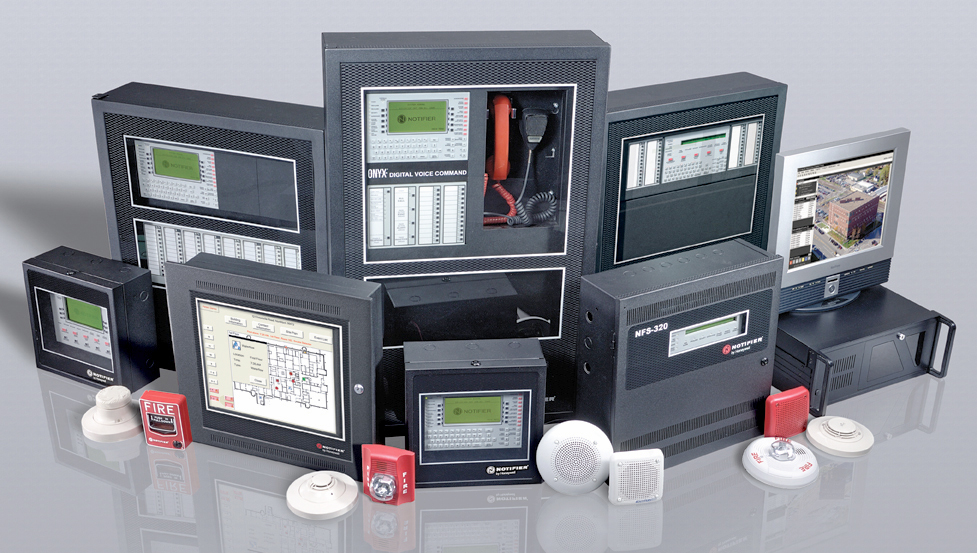
When people think of commercial fire alarm systems, they often picture a loud siren blaring in response to smoke. While that’s certainly a key function, modern fire alarm systems are far more sophisticated. Commercial fire alarms are designed to monitor a wide range of fire and life safety devices to detect threats early, save lives and protect property.
World-class fire alarm systems like those offered by LVC Companies from NOTIFIER by Honeywell can monitor smoke detectors, heat detectors, flame detectors, water flow detectors for fire sprinkler systems, carbon monoxide detectors, pull stations and more. The fire alarm system also monitors the overall health and operation of the devices and the system itself, including power supply and network connections.
Here’s a more detailed breakdown of what a fire alarm system can monitor:

Fire Detection
Smoke Detectors
Smoke detectors come in various types that utilizes technologies like photoelectric and ionization methods. Ionization detectors excel at detecting fast-flaming fires, while photoelectric detectors are better at sensing smoldering fires. Dual-sensor detectors combine both technologies for broader coverage.
Heat Detectors
Some fires produce little smoke but intense heat. Fixed temperature heat detectors trigger an alarm when a specific temperature is reached. Rate-of-rise heat heat detection devices watch for rapid increases in temperature, and trigger even if the temperature threshold isn’t reached. These are ideal for areas like kitchens, garages, or mechanical rooms.
Flame Detectors
Flame detectors are on alert for the presence of open flames, offering early detection of fires. In high-risk environments like chemical plants or fuel-storage areas, flame detectors use infrared or ultraviolet sensors to detect the presence of flames directly.
Air Quality and Gas Detection
Advanced fire alarm systems can monitor for combustible gases (like methane or propane), toxic gases (like ammonia or hydrogen sulfide), and particulate matter that may indicate early combustion. These are especially useful in industrial or laboratory settings.
Carbon monoxide (or CO) detectors check for the presence of this colorless, odorless, and potentially deadly gas. CO contains carbon and oxygen. It is produced by the incomplete combustion of fuels like gas, oil, wood, and coal—when they burn without enough oxygen.
CO can accumulate in enclosed spaces and cause poisoning—even at low concentrations. It is often called the “silent killer” because it is impossible to detect without a CO detector.
Water Flow Detection
Water flow detectors are electro-mechanical devices that monitor the flow of water within fire sprinkler systems. When flow is detected, they send a signal to the fire alarm panel indicating a fire response, an accidental sprinkler head discharge, an inspector’s test valve or main drain valve being opened, a broken sprinkler pipe, testing, maintenance, a faulty or out-of-adjustment waterflow switch, or a surge in the system.

Manual Activation Point Monitoring
Fire alarm systems monitor the activation of manual pull stations or call points that allow people to trigger an alarm if they see a fire before the system detects it.
System Health and Tampering
Modern fire alarm systems also monitor their own components, such as battery levels, wiring integrity, sensor functionality, and unauthorized tampering or disconnection. Collectively, this ensures the system is always ready to respond.
Fire alarm system health and operation monitoring also includes control panel status, including power supply, network connectivity, and device status. Device status monitors the status of individual devices, including their operational status and any errors or issues. Network connectivity ensures proper communication between the control panel, remote displays, and other network components. Meanwhile, automated software updates ensure the system is up-to-date with the latest software and security patches.
Environmental Conditions
Some systems track environmental data like humidity, air pressure, and temperature trends. This data can help in the early detection of fire risks or in maintaining safe conditions in sensitive areas like server rooms or archives.
In conclusion, fire alarm systems are no longer just about detecting smoke—they’re intelligent, multi-sensor networks that monitor a wide array of environmental and safety conditions. Whether in apartments, offices, factories, or hospitals, these systems are critical for early detection, rapid response, and ultimately, saving lives.
LVC Companies installs, tests, services, inspects and monitors industry-leading fire alarm systems from NOTIFIER by Honeywell. LVC provides fire alarms services statewide in Minnesota from our Minneapolis, Duluth, Hibbing, International Falls and Rochester offices; fire alarms in Wisconsin from our Eau Claire office; and fire alarm services in Arizona from our Southwestern U.S. Hub located in the Tempe and Phoenix area. Contact us today to learn more.


